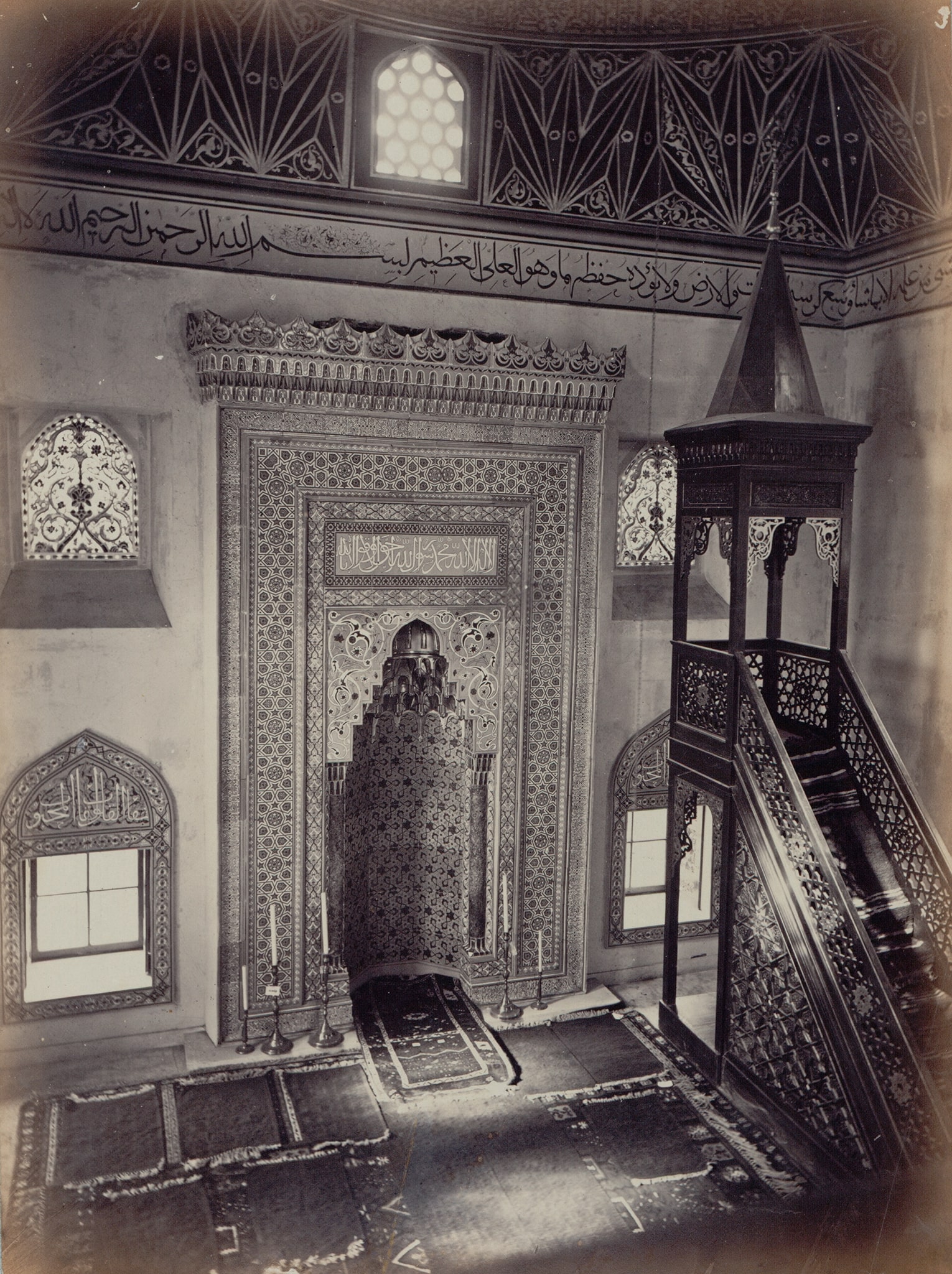Forschung
A close look at the window’s design reveals that it is exactly the stucco lattice found in the upper half of the stucco and glass window illustrated in fig. 34 in Léon Parvillée’s publication Architecture et décoration turque au XVe siècle (IG_245). Parvillée was the architect of the 1867 Ottoman pavilions. Either he based the design of the windows shown in Paris on the drawing reproduced in his publication, meaning that new windows were made for the occasion, or the historical architectural fragments that were the base for the drawing were exported to Paris and used temporarily in the mosque pavilion.
In Architecture et décoration turque au XVe siècle, the window illustrated is described as the upper window of the Yeşil Türbe (Green Tomb) in Bursa, which was built after 1421. The stucco and glass window is depicted without any trace of damage. Neither in the caption nor in the text is there information as to whether the illustration shows a window that survived the severe earthquake of 1855 in situ, or a window created during the restoration works that were carried out in the 1860s by Parvillée amongst others (Parvillée, 1874, pp. 4, 14–15). In Parvillée’s publication, the window is presented as a creation of early Ottoman times, as he clearly states that all the works documented in his book stem from a period from the 14th to the 17th centuries (p. 1). But it is unlikely that a fragile window survives the passing of time and earthquakes in this perfectly preserved state. It therefore remains an open question whether the window depicted is a creation of contemporary craftsmen, perhaps based on a design by Parvillée, or the outcome of a restoration based on surviving historical fragments.
Typologically, the window in the mosque pavilion does not correspond to the stucco and glass windows in Western collections, which are mostly of Egyptian or Tunisian provenance. For the most part, they show geometrical patterns, or individual motifs, like flowers in a vase, rather than a floral ornament of intertwined tendrils and palmettes filling the surface.
A similar typology to the window in the Ottoman Mosque, with a tendril with palmettes growing upwards while forming symmetrical curves, can be found in a window of the Süleymaniye Mosque in Istanbul depicted by Pietro Montani in Marie de Launay’s Die Ottomanische Baukunst / L’Architecture ottomane / Uṣūl-i Miʿmāriyye-i ʿUsmaniyye of 1873 (IG_234).
The stucco and glass windows seen on the photograph were auctioned off as architectural fragments after the 1867 world’s fair ended (IG_398). In the auction catalogue, they are described as being very similar to the ones in the Pavillon du Bosphore, another Ottoman pavilion at the 1867 Exposition Universelle (IG_109).
Datierung
1867
Verknüpfte Standorte
Herstellungsort
